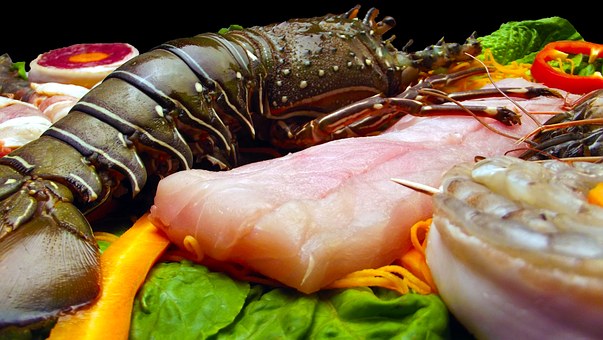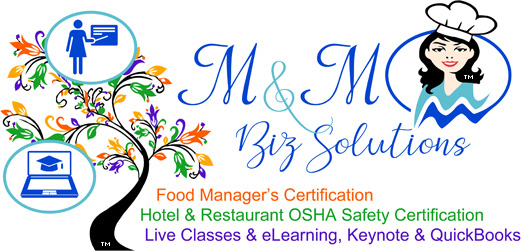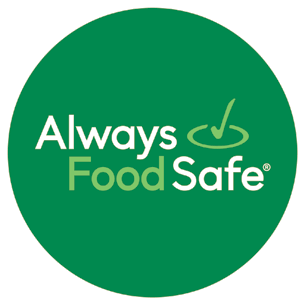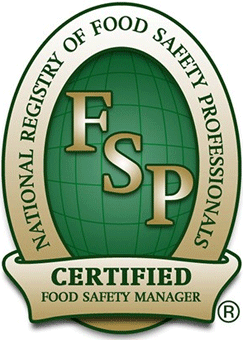Food Safety Classes
- Minnesota Initial Online Class
- Minnesota Refresher Live Webinar
- OHIO Manager - Level 2
- Wisconsin Small Operator
- Food Handlers
- Certified Food Safety Manager (CFSM) Courses
- Food Allergen Awareness Certification
- Hotel & Restaurant OSHA Safety
- Texas Live ServSaf. Classroom Classes
- OHIO PIC
- Continuing Education
Compare Exams
Food Manager Training
Services
Keynote & Training Topics
Blog
Cross-Contact vs. Cross-Contamination by Marshie Morgan

19 Jul 2019 16:00:00 Marshie

Many people make the mistake of confusing cross-contact with cross-contamination.
Cross-Contact deals with allergens and cross-contamination is introducing a raw food such as uncooked chicken breast into a Cesar salad. It is important to understand the differences between cross-contact vs. cross-contamination to keep your kitchen safer. An allergic reaction is caused by the body’s negative reaction to a food protein. According to foodsafety.gov a food allergy is an abnormal response to a food triggered by your body's immune system. Allergic reactions to food can sometimes cause serious illness and death. The Big Eight foods that most often trigger allergic reactions are:

a person with a food allergy may have.
1. Milk
2. Eggs
3. Fish (e.g., bass, flounder, cod)
4. Crustacean shellfish (e.g. crab, lobster, shrimp)
5. Tree nuts (e.g., almonds, walnuts, pecans)
6. Peanuts
7. Wheat
8. Soybeans
Cross-contact occurs when an allergen is inadvertently transferred from a food containing an allergen to a food that does not contain the allergen. Cooking does not reduce or eliminate the chances of a person with a food allergy having a reaction to the food eaten. Thoroughly washed with soap and water and sanitize all contact surfaces.
Cross-contamination is a common factor in the cause of foodborne illness. Microorganisms such as bacteria and viruses from different sources can contaminate foods during preparation and storage. Proper cooking of the contaminated food may reduce or eliminate the chances of a foodborne illness when cooked to the proper temperature. Thoroughly washed with soap and water and sanitize all contact surfaces.
It is important when planning your menu that you take into consideration how to reduce both cross-contact and cross-contamination by putting policies and procedures in place. For example, when making Cesar Salad. We would marinate our chicken breasts in a separate location from where we prep the salad to ensure we do not cross-contaminate the salad.
An example of how to avoid cross-contact would be making chocolate chip cookies with nuts and without nuts. We have to train staff. They cannot plate up the cookies with the same gloves or the same spatula due to a trace of the nuts from the chocolate chip cookies with nuts touching the non nut cookies.
An allergen cannot be destroyed by freezing, cooking or frying. In the illustration of the cookies to prevent cross-contact begins from the beginning of making and cooking them. Ensuring we use different utensils, gloves and pans for the different cookies. Then after they bake we have to again use different utensils, gloves and containers for the chocolate chip cookies. Even when we serve the cookies we have to change out our gloves and use a separate plate or platter for the nutty cookies verses the non-nutty cookies.
PIC, person in charge has the responsibility to teach and correct wait staff, cooks, and bus personnel from making deadly mistakes in the kitchen. Something as simple as not washing and sanitizing our knives can cause an allergic reaction to someone and risk them dying in the dining room from cross-contact. Cross-contamination can cause patrons to be sicken, hospitalize and even cause death from a foodborne illness. This is why I teach food safety because I realize keeping our food safe is a matter of life and death.
– Chef Marshie Morgan, CFM
Blog Search
Popular Articles
- Eva Barrios E. Sous Chef of Austin Country Club
- Gas Cylinders in Restaurants
- Why is Hepatitis A Vaccines Mandatory for Food Handlers in Parts of U.S.?
- Cross-Contact vs. Cross-Contamination by Marshie Morgan
- Chef Paola Chamberlain, C.C. a Private Chef and E. Chef at Waco Ale Company in Waco, TX
- Lance S. Cook CEC, CCA, WCEC, CFBE,FMP, CFSM at Hammock Dunes Club in Palm Coast, Florida
- Geno Bahena Chef de Cuisine at Blue Dalia Restaurant and Tequila Bar
- Daniel Vercher E. Chef of Guckenheimer
- Chef Michele Brown, CEPC, EWMCS, Department Lead Instructor at Texas State Technical College
- Michael Lottermoser with W Dallas Victory Hotel & Residences
























